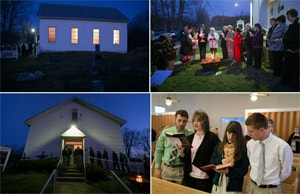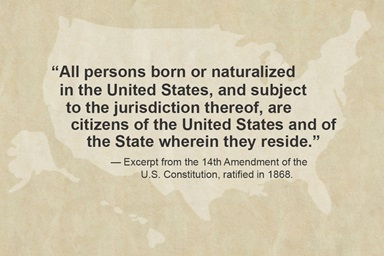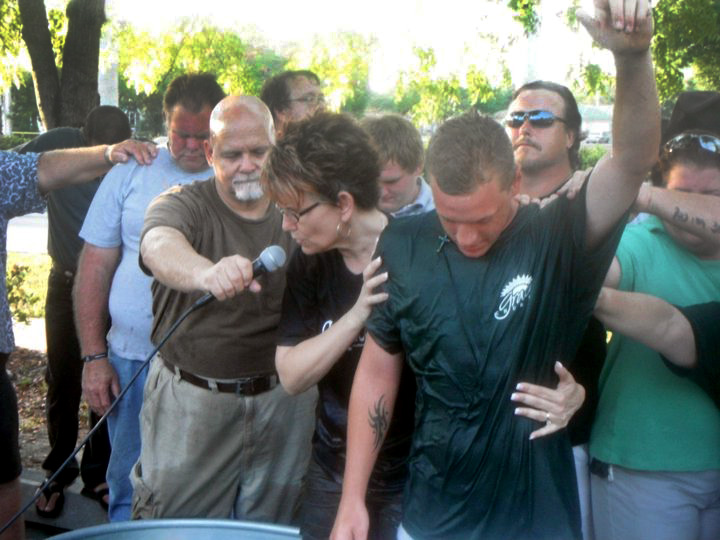
When large, multisite Grace Church in Florida needed a pastor for its new downtown Fort Myers campus, the Rev. Arlene Jackson got the call.
She began with about 30 in worship. Over five years, her flock at Grace — a United Methodist church — has grown to more than 400. Many were previously “unchurched” and recovering from addictions, as she did.
“It’s the most diverse bunch of mixed nuts you’ve ever met,” Jackson said. “They’re growing in Christ and bringing people and having a lot of joy in their walk with the Lord.”
Jackson has impressed many, including Grace’s senior pastor, the Rev. Jorge Acevedo.
Trending Local
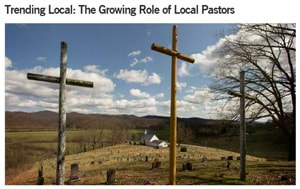
Read the full the series about growth of local pastors in The United Methodist Church.
“This girl would take on hell with a squirt gun,” he said.
Proof of his and others’ faith in Jackson is that she’s just been given an unusual cross-conference appointment, to start a Grace Church campus in Sioux Falls, South Dakota.
But Jackson is not an ordained elder, the kind of United Methodist pastor who spent three or four years getting a master of divinity degree and made it through provisional member elder status to become “fully connected,” with a guaranteed appointment.
She’s a full-time licensed local pastor who answered her call to ministry in middle age. Her training has included a two-week licensing school and the part-time Course of Study required of such pastors after they enter.
Local pastors like Jackson are on the rise numerically in The United Methodist Church in the United States. And though typecast as mainly leading small churches, they are landing in a range of positions and church sizes.
Bishop Robert Schnase of the Missouri Conference has appointed many local pastors, and is among their champions.
“We do not presume that every elder is somehow more gifted than every local pastor,” Schnase said. “Therefore, we have local pastors serving as senior pastors of large congregations, in senior staff positions in large churches, as new church start pastors and on the conference staff as directors.”
The numbers gameThe upward trend with local pastors comes as ordained elders are becoming rarer.
The Lewis Center for Church Leadership at Wesley Theological Seminary has shown in its annual Clergy Age Trends reports that retirees have long outpaced newcomers to the elder ranks.
The denomination's General Council on Finance and Administration reports that from 2010 to 2015, the number of ordained elders and provisional member elders serving churches dropped from 15,806 to 14,614.
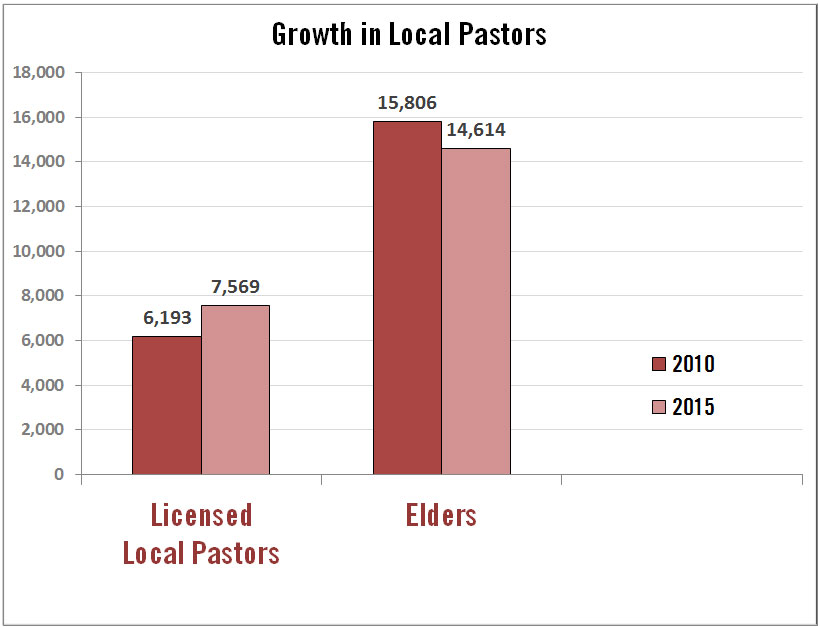
United Methodist elders are declining in number in the U.S., but licensed local pastors are on the increase. “Elders” above includes ordained elders and provisional member elders appointed to churches, as opposed to extension appointments. “Local pastors” includes full-time and part-time local pastors. Data source: GCFA.
Though the denomination was shrinking in the United States, local pastors appointed to churches climbed from 6,193 to 7,569 in that time. Both full-time and part-time local pastor numbers grew, with the latter growing faster.
The Rev. Lovett Weems, director of the Lewis Center, has long followed United Methodist clergy trends. He notes that in 1990, elders outnumbered local pastors 5 to 1. That ratio is roughly 2 to 1 now, and drops further when looking just at those in church appointments.
Conferences vary widely in clergy makeup, but the West Virginia, Kentucky, Tennessee, Oklahoma Indian Missionary and Red Bird Missionary conferences had more local pastors than elders serving churches as of summer 2015, according to GCFA. Some other conferences, such as Upper New York, East Ohio, North Alabama and Missouri, are close, and still others acknowledge they are highly dependent on this growing category of clergy.
“We’d be in a world of hurt in the Holston Conference without local pastors,” said the Rev. David Graves, former superintendent of its Kingsport District.
While elder retirements are a big factor, more and more United Methodist churches can’t afford the minimum salary and benefits required for an elder, said Bishop Thomas Bickerton of the Western Pennsylvania Conference.
But Bickerton and others insist local pastors often make the case for themselves by bringing skills from other careers, as well as a high level of commitment and understanding of the local culture.
The Rev. Ted Smith is superintendent of the Virginia Conference’s Fredericksburg District, and monitors its statistics in membership, attendance, professions of faith, baptisms and stewardship.
“We’re seeing some of our most effective, dynamic results from local pastors, hands down,” Smith said.
While the Flynns represent one end of the spectrum, on the other is the Rev. Rudy Rasmus.
Rasmus leads St. John’s United Methodist Church in Houston, which averages about 2,100 in worship and is known for innovative social outreach. Since he arrived there in 1992, the church has added about 300 members a year, leaving him no time to go to seminary. Instead, he went the licensed local pastor route, as did his wife, the Rev. Juanita Rasmus, who is St. John’s co-pastor.

These days, Rudy Rasmus writes books on faith and church leadership, and gets invited to speak to United Methodist groups, including the Central Texas Conference’s annual gathering this past June.
One of his prized possessions is a photo of his mother riding a bicycle for the first time at 83, and he said he may follow her example in late-life boldness and go to seminary one day.
For now, though, he’s sure his St. John’s flock is unconcerned that he holds no master of divinity degree.
“People don’t really care how much you know,” he said. “They want to know how much you care.”
Course of Study makes comeback
Skeptics included famed Methodist revivalist Peter Cartwright, who asserted “illiterate Methodist preachers set the world on fire while they (others) were lighting their matches!”
But in the early 19th century, the Methodist Episcopal Church created the Course of Study as a part-time, basic education program for clergy.
As recently as World War II, most pastors in the denomination were Course of Study-trained. The GI bill allowed many more aspiring clergy to attend seminary, and by 1956 the denomination was requiring a seminary degree for those seeking ordination as elders.
The momentum had shifted decidedly and continued through the unification that created The United Methodist Church in 1968.
“I think what really happened in the 1960s is that (church leaders) wanted to make the master of divinity the only route,” said the Rev. Ted Campbell, professor of church history at Perkins School of Theology, part of Southern Methodist University.
But the Course of Study-trained pastor – licensed, instead of ordained – held on, serving mainly in small churches.
In recent years, a new reality has taken hold, with the number of retiring elders outpacing those entering the ranks and local pastors growing in number and getting appointed to churches of various sizes.
Currently, well over a third of church appointments are to local pastors, most of them trained through Course of Study.
“What’s happening on the ground in the UMC is a sort of back-to-the-future deal,” said Rex Matthews, professor in the practice of historical theology and Wesleyan Studies at Emory University’s Candler School of Theology.
Rasmus appears to be the only megachurch local pastor, but plenty can be found in midsize or large churches. One is the Rev. Dennis Miller.
He studied accounting in college and then went to law school. As a young attorney, he wrote the warranty deed for Aldersgate United Methodist Church, a church plant in Nixa, Missouri, near Springfield.
But Miller, a lifelong United Methodist, soon left the law to answer a call to full-time youth ministry. By then he was married and had a child with a serious medical condition. Stopping for seminary wasn’t practical.
He adds: “I felt called to ministry, not to school.”
Miller became a licensed local pastor and began Course of Study, which he could fit into his busy schedule. He moved from youth ministry to associate pastor at one church, and Schnase appointed him pastor of another in 2006.
It was Aldersgate, for which he’d written the warranty deed.
Under Miller, Aldersgate has grown from 250 to more than 600 in average worship attendance. He credits his staff and the church’s laity, as well as earlier pastors for laying the groundwork.
But he does think his accounting and law backgrounds have helped him with church leadership.
“There’s that practical aspect,” he said.
‘Focused on competency’Local pastors are getting appointed as site pastors, including at the denomination’s most-attended U.S. church, the United Methodist Church of the Resurrection in Leawood, Kansas. The Rev. Jason Gant, a full-time local pastor, leads Resurrection West in nearby Olathe.
The Rio Texas Conference turned to the Rev. Aaron Saenz, a full-time local pastor, to lead a church plant in Harlingen, Texas. Under Saenz’ leadership the past nine years, Valley Praise United Methodist Church has become chartered and averages about 360 in worship.
In the Missouri Conference, Schnase has a full-time local pastor, the Rev. Jeff Baker, serving as director of mission, service and justice ministries — a cabinet-level post.
Many large to mid-size churches now have local pastors as associates.
The Rev. Don Underwood, an elder and longtime pastor of the nearly 6,000-member Christ United Methodist Church in Plano, Texas, said the challenge of reaching people in an increasingly secular culture means grooming young elders has lower priority than assembling a strong staff.
“We’re going to be much more focused on competency,” he said, adding that his church has fewer elders on staff now than when it was half its current size.
At Lake Highlands United Methodist Church in Dallas, the Rev. Pam Clark, a full-time local pastor, is longtime director of community ministries. Though a suburban congregation, Lake Highlands under Clark operates a food pantry and evangelizes through a storefront church and bilingual Bible studies in apartment complexes.
“She has such a heart for this particular niche, people who are materially poor, and making sure God’s word gets to them in relevant ways,” said Lake Highlands’ senior pastor, the Rev. Jill Jackson-Sears. “We could not have done this kind of ministry without Pastor Pam.”

The local pastor trend is not without issues. Schnase notes that, because local pastors don’t have guaranteed appointment, deploying them in large numbers “multiplies administrative complexity” as they undergo required annual interviews with district committees.
Others point out that it can strain ecumenical relations when United Methodists have thousands of non-ordained clergy authorized to baptize and offer communion and do weddings and funerals, and some denominations have none.
“If you’re having an ecumenical service, how do you adjudicate this?” said the Rev. William Lawrence, dean of Perkins School of Theology.
And while denominational leaders seem unanimous in praising local pastors’ willingness to serve, often at financial sacrifice, questions linger about their theological training.
A high school education — not college — is required for Course of Study.
“It’s not uncommon to be in class and have a guy with a Ph.D. sitting next to a fellow who barely got out of high school,” said the Rev. F. Belton Joyner, an author of books on Methodism and a Course of Study instructor in North Carolina. "It makes teaching extremely interesting."
The Course of Study consists of 20 classes, covering the Bible, ethics, preaching, evangelism, worship and sacraments and more. Many classes are taught in two-week summer residencies, with readings and papers assigned in advance.
Course of Study has been strengthened but doesn’t match three or four years of full-time seminary attendance, said the Rev. Rena Yocom, who retired last year as the executive overseeing clergy formation and theological education at the United Methodist Board of Higher Education and Ministry.
“There isn’t any way a local pastor can have the depth of training that an ordained elder has,” Yocom said. “That doesn’t make them less effective, necessarily.”
Trajectory of respectLocal pastors have their own concerns. Their authority is limited to their parishes — hence the adjective “local.” (They have to get permission to do a wedding elsewhere.) They aren’t eligible to be a district superintendent or a bishop. Nor can they be clergy delegates to General Conference or Jurisdictional Conference.
No matter what size church they lead, they’re not supposed to wear a stole.
But the Rev. Mike Mahaffey, president of the National Fellowship of Associate Members and Local Pastors, said the trajectory is clearly toward more respect and authority for local pastors. Thanks to General Conference actions, they can serve in extension appointments and those who have completed Course of Study can vote for General Conference and Jurisdictional Conference delegates.
On the Facebook page they share, local pastors air the occasional complaint about second-class treatment. But things really have improved, said the Rev. Max Rudd.

For about 40 years, he’s been a local pastor leading Lost Creek United Methodist Church in Stillwater, Oklahoma. Average worship attendance has grown from 10 to 200. The church spends half its $400,000 budget on missions.
Rudd began as a part-time bivocational pastor, and says the Oklahoma Conference lost track of him, as far as paperwork, for years.
But these days he’s a star, with the conference asking him to give presentations on effective church leadership.
“It’s been really neat to see local pastors becoming a more vital part of the ministry,” Rudd said. “There’s room for everybody.”
Hodges, a United Methodist News Service writer, lives in Dallas. Contact him at (615) 742-5470 or [email protected].
Like what you're reading? Support the ministry of UM News! Your support ensures the latest denominational news, dynamic stories and informative articles will continue to connect our global community. Make a tax-deductible donation at ResourceUMC.org/GiveUMCom.

